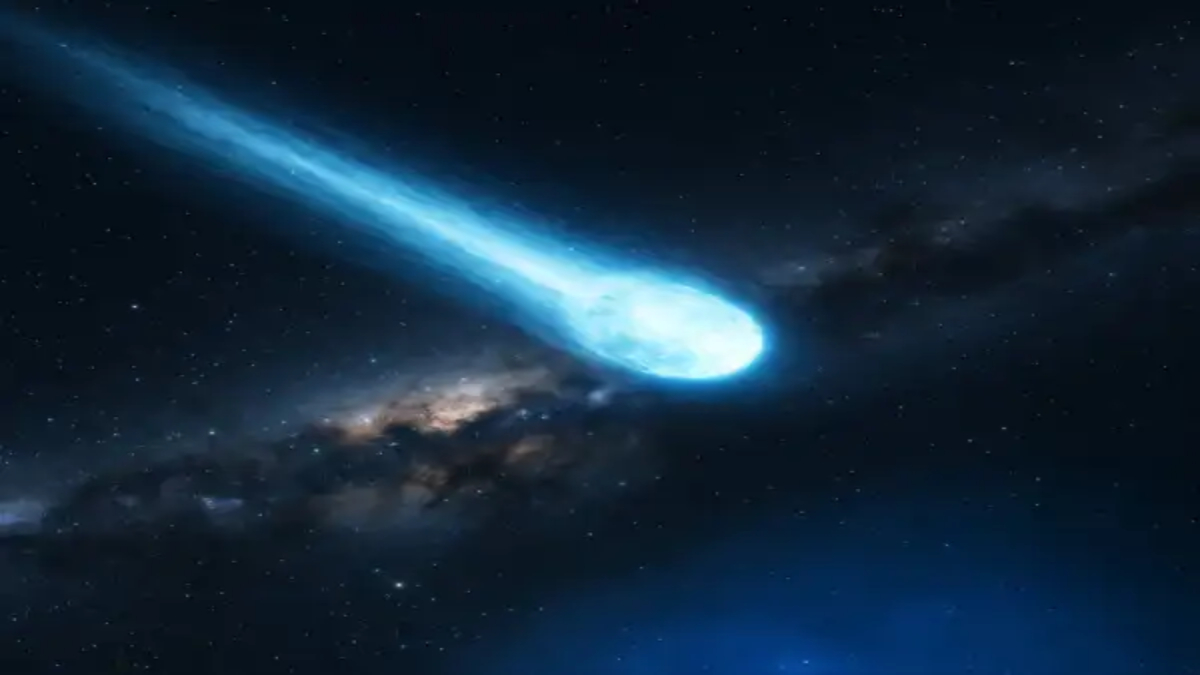Now Reading: Cosmic Enigma: Michio Kaku Suggests Interstellar Object 3I/ATLAS Could Be an ‘Intelligent Visitor’
-
01
Cosmic Enigma: Michio Kaku Suggests Interstellar Object 3I/ATLAS Could Be an ‘Intelligent Visitor’
Cosmic Enigma: Michio Kaku Suggests Interstellar Object 3I/ATLAS Could Be an ‘Intelligent Visitor’

The astronomical community is currently gripped by a profound debate as the mysterious object 3I/ATLAS, only the third interstellar visitor ever confirmed, makes its dramatic swing through our solar system. While a majority of scientists view it as a natural space rock, renowned theoretical physicist Dr. Michio Kaku has openly raised the provocative possibility that the object may be an ‘intelligent visitor’ or an engineered craft from an extraterrestrial civilization.
Discovered on July 1, 2025, by the ATLAS telescope system, the object is classified as interstellar due to its hyperbolic trajectory, confirming its origin from beyond our solar system. Its very high speed relative to the Sun and its unusual path have already made it a subject of intense global scrutiny, with NASA quietly tracking its movements for months. The object, estimated to be roughly the size of Manhattan, has already exhibited characteristics that defy the norms of typical cometary behavior, fueling the more speculative theories.
The Crucial Litmus Test: The Oberth Effect
The centerpiece of Dr. Kaku’s argument, shared in recent interviews, hinges on a critical test that is set to occur as 3I/ATLAS reaches its closest approach to the Sun, known as perihelion, around October 29–30, 2025.
Kaku suggests that the object’s movement during this crucial solar fly-by will serve as the ultimate litmus test for its true nature. If 3I/ATLAS gains an unexplained, extra boost of energy as it whips around the Sun, it would strongly imply an artificial form of propulsion is at play, a definitive sign of intelligent guidance.
The principle Kaku refers to is related to the Oberth effect, a concept in orbital mechanics where an object can gain a significant change in speed by firing its thrusters while traveling at high velocity close to a massive body like the Sun. In the case of 3I/ATLAS, Kaku emphasizes that according to ordinary physics, the energy flowing into the fly-by must equal the energy exiting it. An unexplained excess of kinetic energy, therefore, would be, in his words, a “cosmic calling card” for extraterrestrial technology.
Echoes of ‘Oumuamua and Scientific Skepticism
The debate around 3I/ATLAS is remarkably similar to the one that surrounded ʻOumuamua, the first interstellar object detected in 2017, which also showed non-gravitational acceleration. Harvard astrophysicist Avi Loeb, who famously suggested ‘Oumuamua might have been an alien probe, is also closely monitoring 3I/ATLAS, which appears to fulfill several criteria that would distinguish it from a typical comet.
While the majority of the scientific community remains skeptical, arguing that the object is likely an unusually composed or highly active comet that formed under different physical conditions in another star system, the unusual movements and energy signatures reported by trackers have kept the debate alive. Observations have noted unusual trajectory shifts and even an anti-tail phenomenon—where the tail of gas and dust points toward the Sun—that challenges standard cometary physics.
For now, 3I/ATLAS is a fast-moving messenger from a distant star, offering either a profound new understanding of interstellar chemistry and physics, or the first conclusive evidence of advanced technology from another civilization. As telescopes worldwide focus their lenses on the Sun’s edge, the world is waiting to see if this visitor obeys the known rules of the cosmos, or if it will defy them altogether, opening a new chapter in humanity’s search for life beyond Earth.







